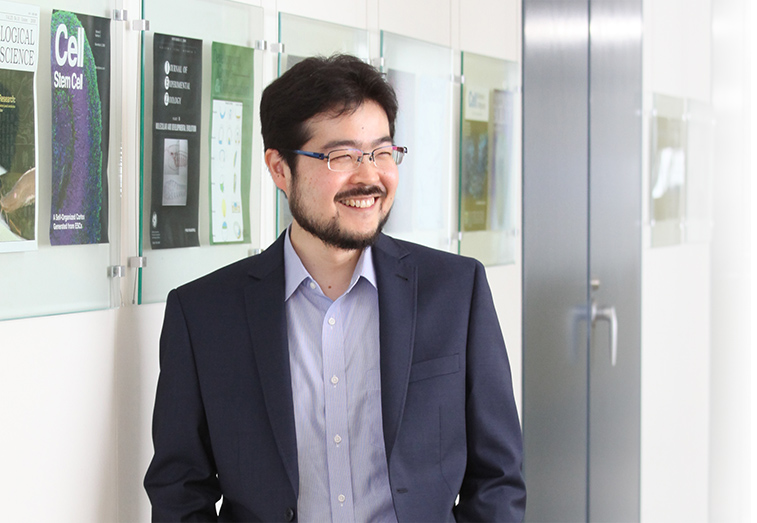
Team Director
Minoru Takasato
Ph.D.
Laboratory for Human Organogenesis
LocationKobe / Developmental Biology Buildings
E-mailminoru.takasato@riken.jp
What do you think is the ultimate goal of regenerative research using human pluripotent stem cells? We think that is to recreate a whole replaceable organ in vitro via directed differentiation. In the previous study, we developed a protocol by which human pluripotent stem cells can be differentiated into the intermediate mesoderm that self-organizes kidney organoids. Kidney organoids comprises all anticipated renal tissues, including nephrons, collecting duct, blood vessels and renal interstitium, although, they are still far from the real human kidney in their size, tissue complexity, maturity and functionality. By precisely recapitulating the developmental process of human kidney in directed differentiation of human pluripotent stem cells, we are trying to achieve the ultimate goal, generation of a three-dimensional urinary tract including the kidney and the bladder that is functional and transplantable to the patients. We also study about how to recapitulate the development of other organs that connect to the kidney. We appreciate knowledge from basic developmental biology that is essential for such regenerative studies; therefore, we are highly interested in studies of human embryology. Utilizing our unique technology that generates hPSCs-derived kidney organoids from the pluripotent stage in vitro, we are especially investigating developmental mechanisms of human mesoderm and kidney.
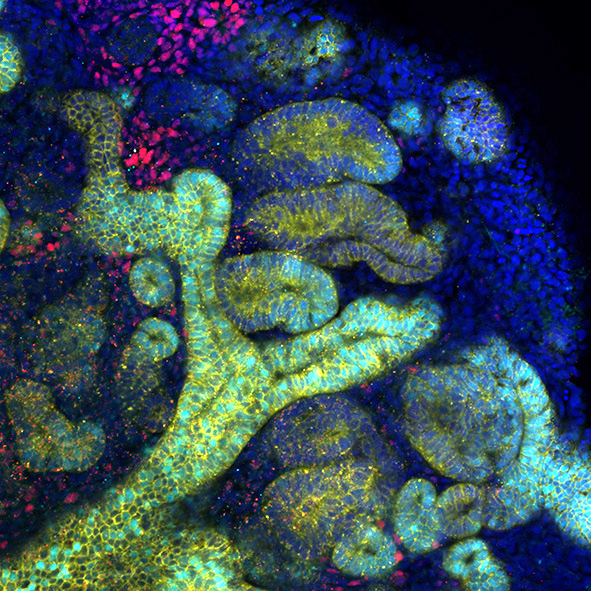
Kidney organoids derived from human iPS cells. The organoid contains two kidney progenitors, the ureteric tree (yellow with cyan) and nephron progenitor (red), as well as developing nephrons (yellow).
Confocal microscopic Z-stack images from the bottom to the top of kidney organoids. Developing nephrons are segmented into 4 compartments, including the collecting duct (yellow and green), distal tubule (yellow only), proximal tubule (red) and glomerulus(green only).
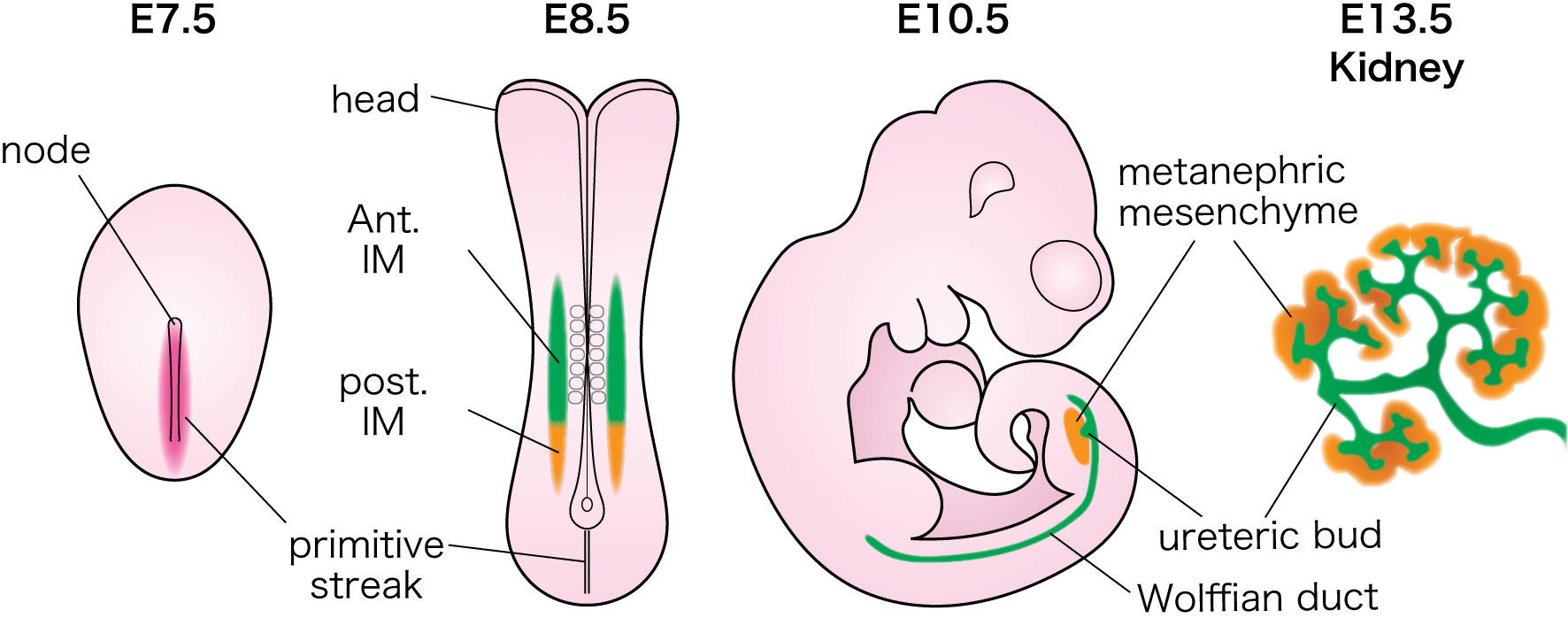
A schematic of kidney progenitor development in mouse embryos. The metanehpric mesenchyme (MM) and the ureteric bud (UB) are 2 kidney progenitors interacting reciprocally to build the kidney. MM is derived from the posterior intermediate mesoderm (post. IM), whereas UB emerges from the anterior IM (ant. IM). IM develops from the primitive streak (PS). We succeeded the preferential induction of either ant. IM or post IM from human iPS cells.
Research Theme
- Generation of functional and transplantable urinary tract organoids
- Investigation of developmental mechanisms of human mesendoderm from hPSCs
- Developmental biology utilizing human organoids as a platform
Selected Publications
Matsubayashi M, Sakaguchi YM, Sahara Y, et al.
27-Hydroxycholesterol regulates human SLC22A12 gene expression through estrogen receptor action.
FASEB Journal
35(1), e21262 (2021)
doi: 10.1096/fj.202002077R
Knarston IM, Pachernegg S, Robevska G, et al.
An In Vitro Differentiation Protocol for Human Embryonic Bipotential Gonad and Testis Cell Development.
Stem Cell Reports
15(6), 1377-1391 (2020)
doi: 10.1016/j.stemcr.2020.10.009
Yamamura T, Horinouchi T, Adachi T, et al.
Development of an exon skipping therapy for X-linked Alport syndrome with truncating variants in COL4A5.
Nature Communications
11(1), 2777 (2020)
doi: 10.1038/s41467-020-16605-x
Takasato M, Wymeersch FJ.
Challenges to future regenerative applications using kidney organoids.
Curr. Opin. Biomed. Eng.
13, 144-151 (2020)
doi: 10.1016/j.cobme.2020.03.003
Takasato M.
Advice for the Next Generation: Minoru Takasato.
Cell Stem Cell
24, 688-689 (2019)
doi: 10.1016/j.stem.2019.04.009
Phipson B, Er PX, Combes AN, et al.
Evaluation of variability in human kidney organoids.
Nature Methods
16(1), 79-87 (2019)
doi: 10.1038/s41592-018-0253-2
van den Berg CW, Ritsma L, Avramut MC, et al.
Renal Subcapsular Transplantation of PSC-Derived Kidney Organoids Induces Neo-vasculogenesis and Significant Glomerular and Tubular Maturation In Vivo.
Stem Cell Reports
10(3), 751-765 (2018)
doi: 10.1016/j.stemcr.2018.01.041
Takasato M, Er P X, Chiu H S, Little M H.
Generation of kidney organoids from human pluripotent stem cells.
Nature Protocols
11, 1681-1692 (2016)
doi: 10.1038/nprot.2016.098
Takasato M, Er P X, Chiu H S, et al.
Kidney organoids from human iPS cells contain multiple lineages and model human nephrogenesis.
Nature
526, 564-568 (2015)
doi: 10.1038/nature15695
Takasato M, Little M H.
The origin of the mammalian kidney: implications for recreating the kidney in vitro.
Development
142, 1937-1947 (2015)
doi: 10.1242/dev.104802
Takasato M, Er P X, Becroft M, et al.
Directing human embryonic stem cell differentiation towards a renal lineage generates a self-organizing kidney.
Nature Cell Biology
16, 118-126 (2014)
doi: 10.1038/ncb2894
Members
Minoru Takasato
Team Director
Wei Zhao
Research Scientist
Filip Jos Wymeersch
Research Scientist
Junichi Taniguchi
Special Postdoctoral Researcher
Olena Trush
Research Scientist
Yoshiki Sahara
Visiting Scientist
Chie Fukui
Technical Staff I
Kensuke Yabuuchi
Research Associate
Kazuhiro Ofuji
Research Associate
Rio Noto
Student Trainee
Wataru Uno
Junior Research Associate
Yukari Usuda
Student Trainee
Taiki Satoh
Junior Research Associate
Masaya Goto
Student Trainee
Eri Yamashita
Administrative Part-time Worker I
News
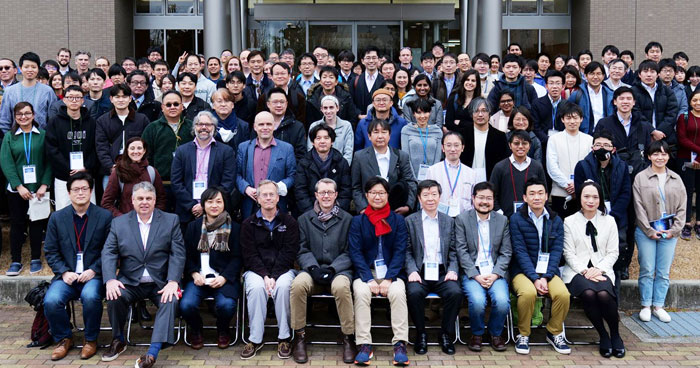
Apr. 5, 2023 BDR News
Meetings
Organoid Symposium convenes in Kobe
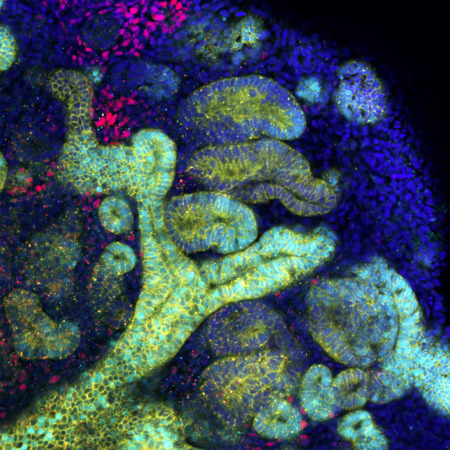
Dec. 21, 2022 Research
The next milestones in generating artificial organs
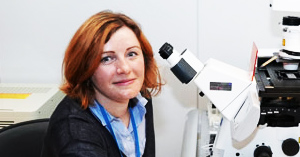
Oct. 27, 2022 BDR News
RIKEN People
Growing kidney organoids

Dec. 24, 2020 Research
New link between cholesterol and hyperuricemia offers potential as therapeutic target [PDF 441KB]
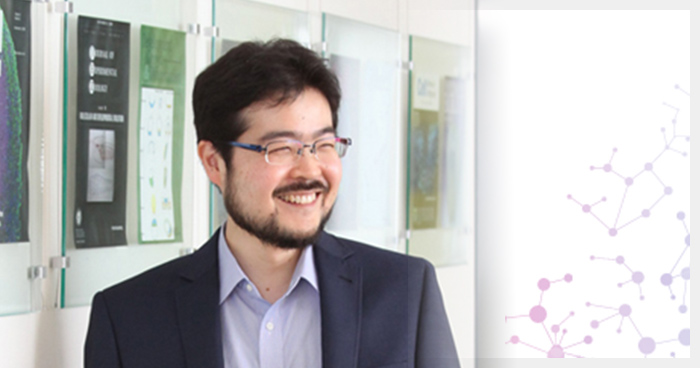
May 7, 2018 BDR News
Minoru Takasato awarded Young Scientists' Prize




